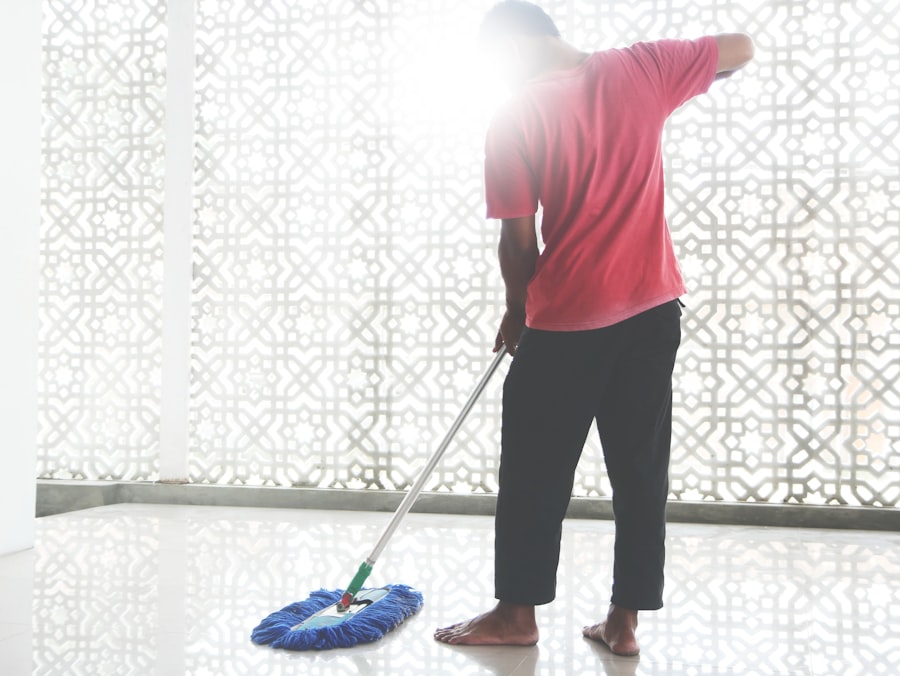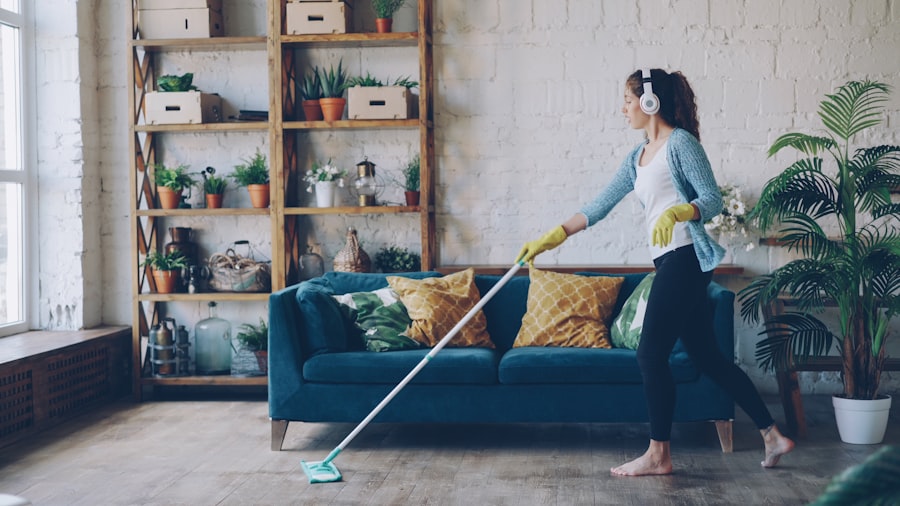Upholstery cleaning is often an overlooked aspect of home maintenance, yet it plays a crucial role in maintaining a healthy living environment. Over time, furniture accumulates dust, allergens, and stains that can affect indoor air quality and overall aesthetics. Regular cleaning not only enhances the appearance of your furniture but also contributes to a healthier home.
Dust mites, pet dander, and other pollutants can settle into the fibers of your upholstery, leading to respiratory issues and allergies. By prioritizing upholstery cleaning, you are investing in the well-being of your family and guests. Moreover, clean upholstery can significantly enhance the longevity of your furniture.
Just as regular maintenance is essential for vehicles and appliances, your upholstered items require care to prevent wear and tear. Neglecting to clean your upholstery can lead to irreversible damage, such as discoloration or fabric degradation. By understanding the importance of upholstery cleaning, homeowners can take proactive steps to preserve their investments and create a more inviting living space.
Key Takeaways
- Regular upholstery cleaning is important for maintaining a healthy and clean indoor environment.
- Professional upholstery cleaning can help in removing tough stains, allergens, and odors, and can also extend the lifespan of your furniture.
- When choosing an upholstery cleaning service in Wyndham VIC, consider their experience, expertise, and customer reviews.
- Common upholstery cleaning techniques include steam cleaning, dry cleaning, and hot water extraction, each suitable for different types of fabrics.
- DIY upholstery cleaning tips include using mild detergent, vacuuming regularly, and spot cleaning spills immediately to prevent stains.
Benefits of Professional Upholstery Cleaning
Engaging a professional upholstery cleaning service offers numerous advantages that go beyond what DIY methods can achieve. One of the primary benefits is the expertise that professionals bring to the table. Trained technicians possess in-depth knowledge of various fabrics and the appropriate cleaning methods for each type.
This ensures that your furniture is treated with the utmost care, minimizing the risk of damage while effectively removing dirt and stains. Additionally, professional cleaning services utilize advanced equipment and high-quality cleaning solutions that are often not available to the average consumer. These tools are designed to penetrate deep into the fabric fibers, extracting dirt and allergens that regular vacuuming simply cannot reach.
The result is a thorough clean that revitalizes your upholstery, restoring its original beauty and freshness. Furthermore, many professional services offer protective treatments that can help repel future stains and extend the life of your furniture.
Choosing the Right Upholstery Cleaning Service in Wyndham VIC

Selecting the right upholstery cleaning service in Wyndham VIC requires careful consideration to ensure you receive quality service tailored to your needs. Start by researching local companies and reading customer reviews to gauge their reputation. Look for businesses that have been in operation for several years, as longevity often indicates reliability and expertise.
Additionally, consider asking friends or family for recommendations based on their experiences. Once you have a shortlist of potential services, inquire about their cleaning methods and certifications. A reputable company should be transparent about their processes and use eco-friendly products whenever possible.
It’s also wise to ask about their insurance coverage; this protects you in case of any accidental damage during the cleaning process. Finally, request quotes from multiple providers to compare pricing and services offered, ensuring you find a solution that fits your budget without compromising on quality.
Common Upholstery Cleaning Techniques
| Technique | Description |
|---|---|
| Steam Cleaning | Uses hot water and steam to clean upholstery and remove dirt and stains. |
| Dry Cleaning | Uses a dry cleaning solvent and specialized equipment to clean upholstery without using water. |
| Shampooing | Uses a foamy shampoo and a rotating brush to clean upholstery and remove dirt and stains. |
| Carbonation Cleaning | Uses carbonated cleaning solution to lift dirt and stains to the surface for easy removal. |
There are several common techniques employed in upholstery cleaning, each suited for different types of fabrics and levels of soiling. One popular method is steam cleaning, which uses high-temperature steam to penetrate fabric fibers and loosen dirt and grime. This technique is particularly effective for deep cleaning and sanitizing upholstery without the use of harsh chemicals.
Steam cleaning not only removes stains but also kills bacteria and allergens, making it an excellent choice for households with pets or allergy sufferers. Another widely used technique is dry cleaning, which involves applying a specialized solvent to the fabric without the use of water. This method is ideal for delicate fabrics that may be damaged by moisture.
Dry cleaning effectively lifts stains and dirt while minimizing drying time, making it a convenient option for busy households. Additionally, some professionals may use upholstery shampooing, which involves applying a foamy cleaner to the fabric and then extracting it along with dirt using a vacuum. Each technique has its advantages, so it’s essential to consult with professionals to determine the best approach for your specific upholstery needs.
DIY Upholstery Cleaning Tips
For those who prefer a hands-on approach, there are several DIY upholstery cleaning tips that can help maintain your furniture between professional cleanings. First and foremost, regular vacuuming is essential. Use an upholstery attachment on your vacuum cleaner to remove dust, crumbs, and pet hair from your furniture’s surface.
This simple step can prevent dirt from settling deep into the fabric fibers and prolong the life of your upholstery. Spot cleaning is another effective DIY method for addressing stains as they occur. Keep a gentle fabric cleaner on hand, along with a soft cloth or sponge.
When a spill happens, act quickly by blotting (not rubbing) the area with the cloth to absorb as much liquid as possible before applying the cleaner. Always test any cleaning solution on an inconspicuous area first to ensure it won’t damage or discolor the fabric. Additionally, consider using a mixture of water and vinegar as a natural cleaner for many types of upholstery; it’s effective at removing odors and light stains without harsh chemicals.
Maintaining Clean Upholstery

Maintaining clean upholstery requires consistent effort but pays off in terms of appearance and longevity. One effective strategy is to establish a regular cleaning schedule based on usage; high-traffic areas may require more frequent attention than less-used pieces. For instance, consider vacuuming your sofa weekly while reserving deeper cleans for every few months or as needed.
In addition to regular vacuuming, consider implementing protective measures such as using slipcovers or throws on frequently used furniture. These can be easily washed or replaced when they become soiled, providing an extra layer of protection for your upholstery underneath. Furthermore, encourage family members and guests to avoid eating or drinking on upholstered furniture to minimize spills and stains.
By adopting these habits, you can keep your upholstery looking fresh and inviting for years to come.
Extending the Lifespan of Your Furniture with Regular Upholstery Cleaning
Regular upholstery cleaning is not just about aesthetics; it’s also about extending the lifespan of your furniture investment. Over time, dirt and grime can accumulate in fabric fibers, leading to premature wear and tear. By scheduling routine cleanings—whether through professional services or diligent DIY efforts—you can significantly reduce this buildup and maintain the integrity of your furniture.
Moreover, regular cleaning helps preserve color vibrancy and texture, ensuring that your upholstered items continue to look their best over time. Fabrics that are well-maintained resist fading and deterioration caused by environmental factors such as sunlight exposure or humidity. By prioritizing upholstery cleaning as part of your home maintenance routine, you are actively contributing to the longevity of your furniture while enhancing its overall appeal.
Upholstery Cleaning for Different Types of Fabrics
Different types of fabrics require tailored approaches when it comes to upholstery cleaning. For instance, natural fibers like cotton and linen are generally more forgiving but may require gentle cleaning methods to avoid shrinkage or damage. On the other hand, synthetic fabrics such as polyester or nylon are often more durable and resistant to stains but may still benefit from specialized cleaning techniques.
Leather upholstery presents its own unique challenges; while it is relatively easy to clean with a damp cloth, it requires regular conditioning to prevent cracking and drying out. Understanding the specific needs of each fabric type is essential for effective cleaning and maintenance. Consulting with professionals who have experience with various materials can provide valuable insights into the best practices for keeping your upholstery in pristine condition.
In conclusion, upholstery cleaning is an essential aspect of home maintenance that contributes significantly to both health and aesthetics. By understanding its importance, recognizing the benefits of professional services, choosing the right provider, employing effective techniques, and maintaining cleanliness through regular care, homeowners can ensure their furniture remains beautiful and functional for years to come. Whether opting for DIY methods or enlisting professional help, prioritizing upholstery cleaning will ultimately enhance your living space while protecting your investment in quality furnishings.
